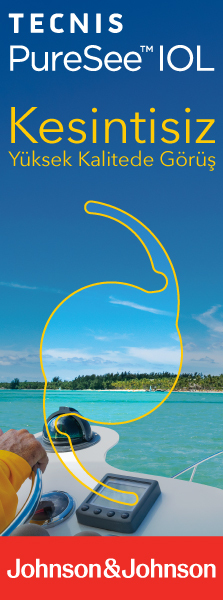2S.Ü. Meram Tıp Fakültesi, Göz Hastalıkları A.D., Konya, Prof. Dr.
3S.Ü. Meram Tıp Fakültesi, Göz Hastalıkları A.D., Konya, Araş. Gör. Purpose: Our study aimed to evaluate plasma homocystein levels of patients with pseudoexfoliation syndrome(PES), pseudoexfoliation glaucoma (PEG) and primary open angle glaucoma (POAG) with that of normal subjects to find out a probable association with glaucoma.
Matherials and Methods: In our study plasma homocystein levels of 151 cases including 33 PES patients, 36 PEG patients, 42 POAG patients and 40 normal subjects labeled as control group have been determined by HPLC method .
Results: No statistically significant difference was detected between the four study groups in the aspect of age and sex (p>0.05). The mean plasma homocystein levels were found to be 13.25±4.74 μmol/L in the PES group, 13.86±3.53 μmol/L in the PEG group, 13.75±3.74 μmol/L in the POAG group and 13.24±4.96 μmol/L in the control group. Statistical analysis comparing mean plasma homocystein levels and number of cases with hyperhomocysteinemia in PES, PEG and POAG groups revealed no significant difference (p>0.05). Patients in PEG and POAG groups were further classified into early, moderate and severe glaucomatous defect according to their ocular findings. Even the comparison of plasma homocystein levels between these 3 groups revealed no statistically significant difference both in PEG and POAG group (p>0.05).
Conclusion: The lower plasma homocystein levels of PES and PEG groups in our study compared to similar studies in the literature lead to suspect genetic and geographical factors as responsible. Further studies with larger series are warranted for a more precise conclusion.
Keywords : Pseudoexfoliation syndrome, pseudoexfoliation glaucoma, primary open angle glaucoma, homocystein, vascular risc factor




